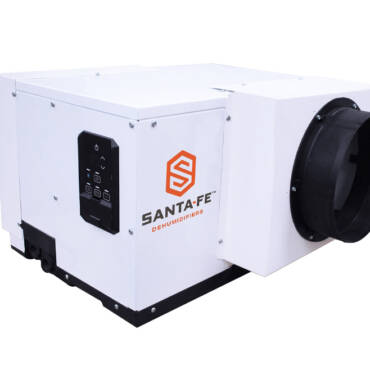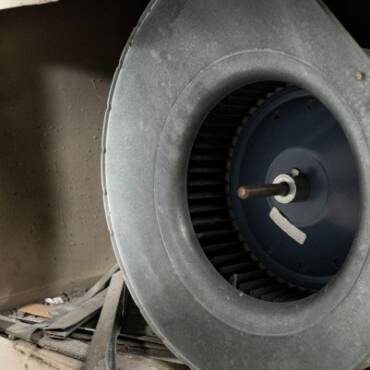Here we are, starting a new year, and once again it’s bringing significant changes to the HVACR industry. Thanks to the AIM Act, 2024 saw a major cut in the production of high-GWP HFC refrigerants like R-410A, but 2025 is the year that the clock has officially run out on the manufacture of new R-410A systems. Meanwhile, states have added their own layers of complexity, with new laws that also govern the phasedown of HFC refrigerants. For HVACR professionals, these changes mean adapting to a new landscape of refrigerants, technologies, and regulations.
Probably the biggest change this year is that as of December 31, 2024, manufacturers must transition their new comfort cooling systems to utilize lower-GWP refrigerants like R-32 or R-454B, which ASHRAE classifies as being mildly flammable (A2L). These systems differ from R-410A units in that most include a refrigerant detection system (RDS), a safety feature whose function is to activate mitigation measures if a leaked A2L refrigerant reaches a certain threshold. Contractors must also make sure that some of their tools, such as gauges and manifolds, recovery machines, vacuum pumps, and leak detectors, are compatible with A2L refrigerants.
Contractors will still be able to install new split-system R-410A equipment until December 31, 2025, if they can find it (packaged systems using R-410A may be sold until January 1, 2028). Most manufacturers have indicated that they expect to have some R-410A inventory through the first quarter of 2025 but that it will likely not be available much longer after that. Some contractors are already noticing that certain types of R-410A equipment are becoming scarce.
Even though manufacturers can no longer produce R-410A systems, they can still manufacture individual components for the service and repair of existing systems. This is due to a provision in the EPA’s Technology Transitions rule under the AIM Act, which permits the indefinite manufacturing, importation, sale, distribution, and export of components used to repair legacy refrigeration, air conditioning, and heat pump (RACHP) systems.
Some in the HVACR industry are not happy with this provision, fearing it would create a service loophole that would allow customers to replace their components forever. As a result, several industry groups sent a letter to the EPA, urging the agency to reconsider exempting condensing units charged with R-410A from the final rule, citing adverse consequences for climate protection. The EPA stated it “intends to develop a proposed action on this matter” but did not provide a timeline for its release.
Another important aspect of the AIM Act is that it does not preempt state laws or rules, meaning individual states can implement more stringent HFC regulations than those outlined in the Act. Indeed, California, Washington, and New York have already adopted stricter refrigerant regulations, particularly in regard to commercial refrigeration systems. Under the AIM Act, new commercial refrigeration systems must use refrigerants with a GWP below 150 or 300 starting in 2026 or 2027. However, in California, regulations that took effect in 2022 require new commercial refrigeration systems with more than 50 pounds of refrigerant to use alternatives with a GWP below 150.
Other new rules are coming for California this year as well. As of January 1, 2025, the sale of bulk refrigerants with a GWP exceeding 2,200 ― such as R-404A and R-507 ― is no longer allowed in the state. Additional bans on other virgin refrigerants are also coming, including R-407A and R-410A by 2030, and R-448A by 2033. After these ban dates, reclaimed refrigerant will be the only option for servicing existing equipment in California, except for stationary equipment owned or operated by the state. For state-owned equipment, using non-reclaimed HFCs with a GWP greater than 750 to fix leaks is prohibited starting January 1, 2025.
Also starting that date, Washington State is requiring new commercial refrigeration systems with more than 50 pounds of refrigerant to use refrigerants with a GWP below 150. Retrofitted equipment will not be subject to the regulation until January 1, 2029. The state also implemented a refrigerant management program for facilities with systems containing more than 50 pounds of refrigerant with a GWP of 150 or more.
In New York State, proposed rules require new commercial refrigeration systems to use refrigerants with a GWP between 150 and 300 starting in 2025, with another significant change planned for 2034. Beginning that year, most new air conditioning and refrigeration equipment would have to use refrigerants with a GWP below 10, making it the most stringent HFC regulation in the country.
As you can see, the rules around HFC refrigerants are changing fast, with new federal and state regulations pushing the HVACR industry toward ever-lower-GWP alternatives. These changes can bring challenges, especially when it comes to aligning different regulations, so staying informed and proactive is key.
Whether you require installation, repair, or maintenance, our technicians will assist you with top-quality service at any time of the day or night. Take comfort in knowing your indoor air quality is the best it can be with MOE heating & cooling services Ontario's solution for heating, air conditioning, and ventilation that’s cooler than the rest.
Contact us to schedule a visit. Our qualified team of technicians, are always ready to help you and guide you for heating and cooling issues. Weather you want to replace an old furnace or install a brand new air conditioner, we are here to help you. Our main office is at Kitchener but we can service most of Ontario's cities
Source link



